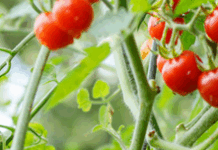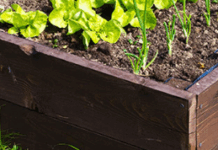Spots, spots, and more spots! Do you have spots in your lawn? Hopefully not, but if you do there is an answer to at least one of the causes of lawn spots. Dollar spot is a common problem on all turfgrasses grown in Kansas, including Kentucky bluegrass, tall fescue, perennial ryegrass, bent grass, buffalo grass, bermudagrass, and zoysia grass. The disease may occur regardless of management or soil fertility, although damage usually is most severe if there is a deficiency of nitrogen. Dollar spot results in the formation of small, roughly circular, bleached patches in the lawn. The patches are more numerous in areas where there is poor air circulation or drainage. Most spots are only a few inches in diameter; however, under favorable environmental conditions and mowing heights greater than two inches, individual spots may exceed 6 inches in diameter. Affected plants within the diseased spots wilt and eventually turn tan or brown. During outbreaks of the disease, numerous spots on the turfgrass coalesce into large irregular dead areas. This can result in substantial damage to the turfgrass.
On individual infected plants, leaves develop light yellow to tan lesions with reddish-brown borders. On cool-season grasses, such as tall fescue and Kentucky bluegrass, lesions normally are located near the middle of the leaf and extend completely across the leaf blade. The bleached area is bordered by dark red to brown margins or lines, which are characteristic of dollar spot. On warm-season grasses (Bermuda grass, buffalo grass, and zoysia grass) the bleached zones on leaves may be more numerous and smaller but are still bordered by brown bands. In the early morning when dew is still present on the turfgrass, small cottony strings of the fungus can sometimes be seen growing from the diseased leaf blades. This growth can be confused with spider webs, “cotton” from plant seeds, or other fungi, and therefore is not a reliable diagnostic feature.
The fungi which cause dollar spot survive indefinitely in thatch and soil. In the presence of a thin film of moisture on leaves and favorable temperatures, these fungi will begin to grow and infect leaves. The fungus apparently does not infect the roots, although toxins produced by these fungi may affect root formation. Dollar spot is most severe in late spring and early summer and again in early fall, however it can occur throughout the summer months.
The presence of dollar spot often signals an improper fertilization program since the disease is more severe in nitrogen-deficient turfgrass. One of the simplest methods to reduce or avoid dollar spot is to maintain an adequate nitrogen fertilization program. Don’t overfertilize, since this can result in an increase of other turfgrass diseases, such as brown patch. Consult Extension publications on lawn fertilization for more complete information. Avoid night watering or other irrigation practices which allow the leaves to remain wet for long periods. Fungicides are rarely necessary for home lawns and are therefore not recommended.




